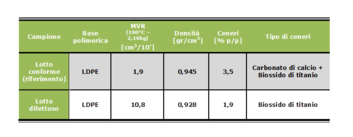We understand your Problem:
Manufacturers that involve plastic components in production processes usually face the challenge of analyzing damaged components in order to determine causes and corrective actions. Tools that are meant to carry out these analyses often include: infrared spectroscopy with the purpose of identifying chemical composition, thermal analysis with the purpose of determining physical properties and other physical-mechanical tests including the determination of the inorganic compound and the study of the rheological properties of the polymer.
This article will describe the study that was done involving technical analyses in order to determine the reasons why plastic components break after being processed.
We provide you with the Solution:
In the first instance we have decided to analyse damaged dispensers and we wanted to make a comparison with the normal dispensers that did not show any sign of damage. We concentrate our analyse on the presence of foreign substances. The first thing we analysed was the polymeric matrix composite of both samples and then the FT-IR spectroscopic analysis combined with DSC thermal analysis that is applied in order to identify the polymeric basis of the samples. These analyses carried out that the material was made of low density polyethylene (LDPE). A more specific analyse was carried out on the differences between the damaged sample composition and the normal sample. In particular the regular spectrum that was taken as point of reference contains residues of calcium carbonate (CaCO3).
Both samples spectra show that it contains Titanium Dioxide (TiO2) and this result was also stated by the IR analyse by showing that sample contains calcium carbonate (CaCO3).
Melt Flow Index was applied in order to have a complete overview of both materials.
The picture shows a table of the following results:
• Both samples show low-density polyethylene basis (LDPE);
• The inorganic filler that is contained in both two samples is different in terms of quantity;
• Sample that is compliant with all the tests shows that inorganic filler is made of titanium dioxide + Calcium Carbonate and the defective sample shows only Titanium Dioxide presence;
• MVR values (190°C - 2.16Kg) of both samples are significantly different.
To conclude this report, the investigations carried out on this sample show that the materials involved in the production of the dispensers are significantly different from each other.

